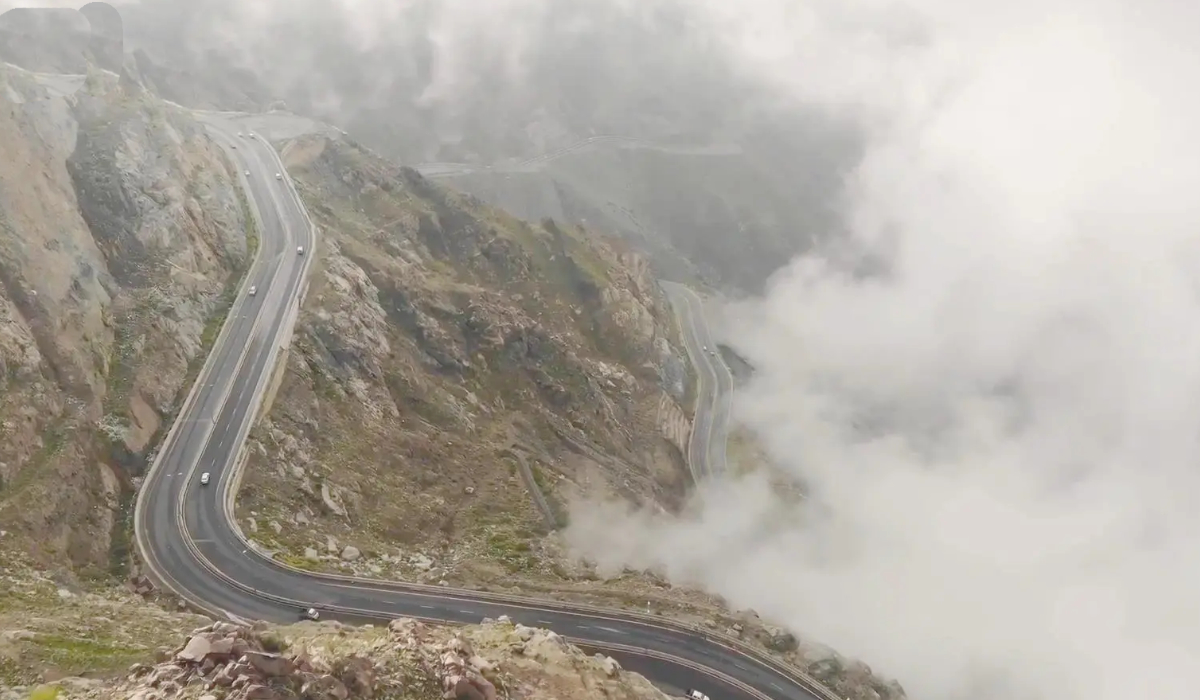RIYADH: In today’s fashion world, the choice of fabric goes beyond just looking good or feeling comfortable.
It has become a significant factor in discussions about cost, sustainability, and environmental responsibility, particularly in Saudi Arabia, where the textile industry is evolving rapidly.
As awareness of climate change and waste issues grows, the debate between synthetic and organic fabrics intensifies.
Understanding the differences between materials like cotton and polyester reveals important trade-offs between price, environmental impact, and performance.
Hassan Al-Ghaith, owner of Bin Ghaith Textiles in Riyadh, reflects on the legacy of his family’s fabric business, which has thrived for three generations. “My passion is textiles and the history of textiles before the revolution,” he says.
His commitment to organic fibers stems from a deep appreciation for the past. “I like the organic type of fibers. I collect them and produce old clothes for use, not to be put in museums.”
In Saudi culture, traditional garments often use organic materials, reinforcing a connection to heritage. Al-Ghaith’s fascination with these textiles is rooted in a desire to understand fashion’s history, particularly before the advent of synthetic materials.
“I am interested in the old fashion of fiber, which is organic linen, cotton, silk, wool, and leather,” he explains. This passion fuels his belief that the synthetic revolution has led to disposable clothing, diminishing the value of traditional craftsmanship.
Among the derivatives of petroleum are materials that were unknown to ancestors, including synthetic fibers produced through oil refining.
These have transformed the textile world and now make up a substantial portion of the clothing industry, especially in menswear and medical garments.
The first plastic known to humanity was celluloid, discovered in 1889, and used to make cinema film. These materials are cheaper than silk and cotton, more durable, and easier to use.
The first synthetic fibers discovered were nylon, followed by polyester and acrylic. Advanced types are not easily flammable and are water-resistant, making them suitable for professionals like firefighters.
From a pricing perspective, synthetic fabrics generally dominate. Polyester, a leading synthetic fiber, costs between $1 to $3 per yard, compared to organic cotton, which ranges from $6 to $12 while synthetic options like nylon are affordable, they obscure hidden environmental costs.
The Saudi Standards, Metrology and Quality Organization emphasizes the importance of regulating synthetic textiles to ensure they meet health and environmental standards.
Saudi Arabia’s growing focus on sustainability aligns with its Vision 2030 initiative, which aims to diversify the economy and promote eco-friendly practices. This shift has led to increased interest in organic and sustainable fabrics among local designers and consumers alike.
Water usage presents another crucial factor in fabric sustainability, especially in a country where water scarcity is a pressing concern. Organic cotton, though natural, is notoriously water-intensive; producing just one kilogram requires up to 10,000 liters.
In contrast, polyester’s production demands only 25 to 30 liters per kilogram, yet it generates significant pollution. Rayon, derived from wood pulp, introduces complexities due to toxic chemicals involved in its processing.
The long-term environmental consequences of synthetic fabrics are troubling. Polyester and nylon are non-biodegradable, lingering in landfills for centuries. They also release microplastics into waterways with every wash, affecting marine ecosystems and entering the food chain.
Al-Ghaith acknowledges the darker side of modern textiles: “Textile waste is the most wasted thing for the environment.”
From a lifecycle perspective, synthetic fabrics often boast greater durability, particularly for activewear. “You can wash it hundreds of times and still it’s like new,” Al-Ghaith states.
However, this durability comes at a cost. While organic fabrics biodegrade faster, they may wear down more quickly, posing their own sustainability challenges.
Certifications like the Global Organic Textile Standard help ensure that organic fabrics meet environmental and social criteria throughout their lifecycle. In Saudi Arabia, there is a growing push for local certifications promoting sustainable practices in the textile industry.
The textile industry has responded to the demand for performance and sustainability with hybrid fabrics. Blends like cotton-polyester provide advantages in comfort and strength but complicate the recycling process since separating blended fibers is often economically unfeasible.
Al-Ghaith said that “the modern way of the industry of the fabrics is so advanced that you cannot feel the difference,” highlighting the complexity of consumer choices today.
Consumer behaviors in Saudi Arabia are shifting, with many seeking to return to traditional fabrics. “Now they are turning back to their roots,” Al-Ghaith observes, referring to a growing appreciation for organic materials.
This trend is echoed by Amwaj Al-Sultan, owner of Waves Area 1, a brand dedicated to non-polyester fabrics. “I got bored from polyester and started making my own pieces,” she explains. Her brand focuses on home robes and feminine dresses, all polyester-free.
Ultimately, the choice between synthetic and organic fabrics is not straightforward. While synthetic fibers offer lower costs and enhanced durability, the long-term environmental implications are profound. Organic materials support natural degradation but often require substantial resources. The emergence of hybrid fabrics aims to bridge the gap, yet it introduces its own sustainability dilemmas.
As the textile industry evolves, conscious choices and responsible production practices will be vital. Whether it is a cotton shirt or a polyester jacket, clothing should reflect values and an understanding of environmental stewardship within Saudi Arabia’s evolving textile landscape.






























